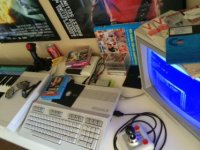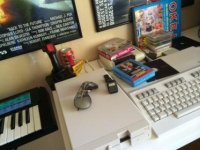Shadow Lord
Veteran Member
Plasma,
I have used Flat Black Dupli-Color to paint drive faces before. The results have been very good as long as you are very careful and use sparingly. However, I have noted that the plastic drive faces becomes soft under the paint and if you were to "wipe" the paint the plastic has actually dissolved a bit. Not a problem after the paint dries. Maybe it is the Dupli-Color mix - even though the can indicates it is for Vinyl and Fabrics.
Speaking of colors does anyone know how many different colors were used in the original IBM 515x/516x/517x series of equipment? I am trying to figure out if the white grill plates are the same colors across AT and XT and if it is the same color as the monitors.
I have used Flat Black Dupli-Color to paint drive faces before. The results have been very good as long as you are very careful and use sparingly. However, I have noted that the plastic drive faces becomes soft under the paint and if you were to "wipe" the paint the plastic has actually dissolved a bit. Not a problem after the paint dries. Maybe it is the Dupli-Color mix - even though the can indicates it is for Vinyl and Fabrics.
Speaking of colors does anyone know how many different colors were used in the original IBM 515x/516x/517x series of equipment? I am trying to figure out if the white grill plates are the same colors across AT and XT and if it is the same color as the monitors.


